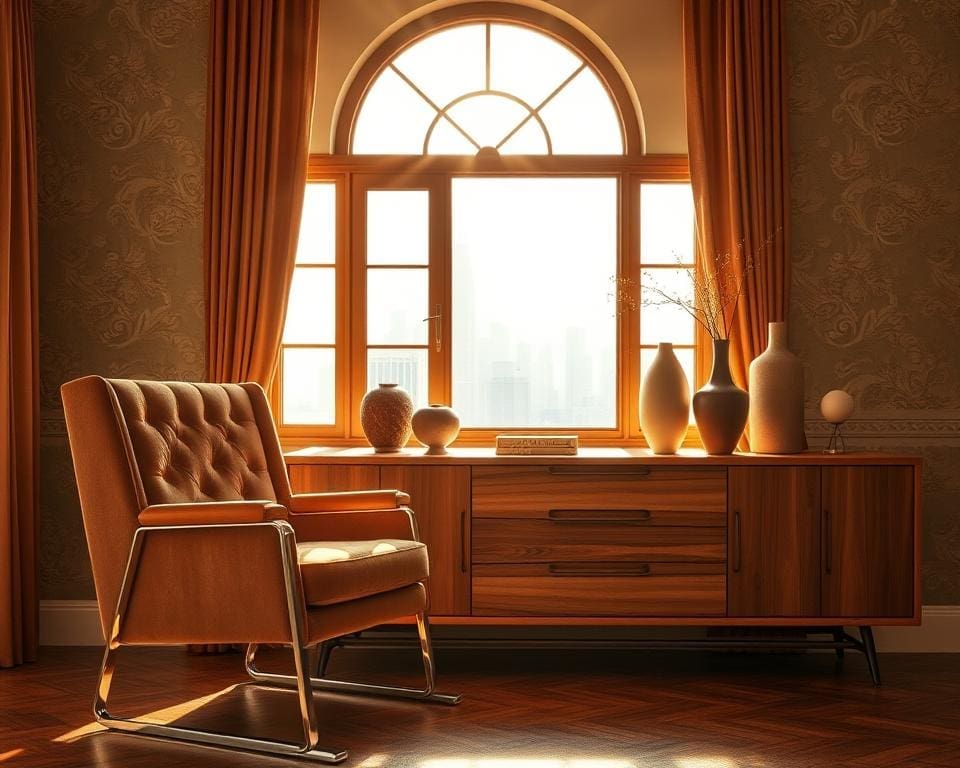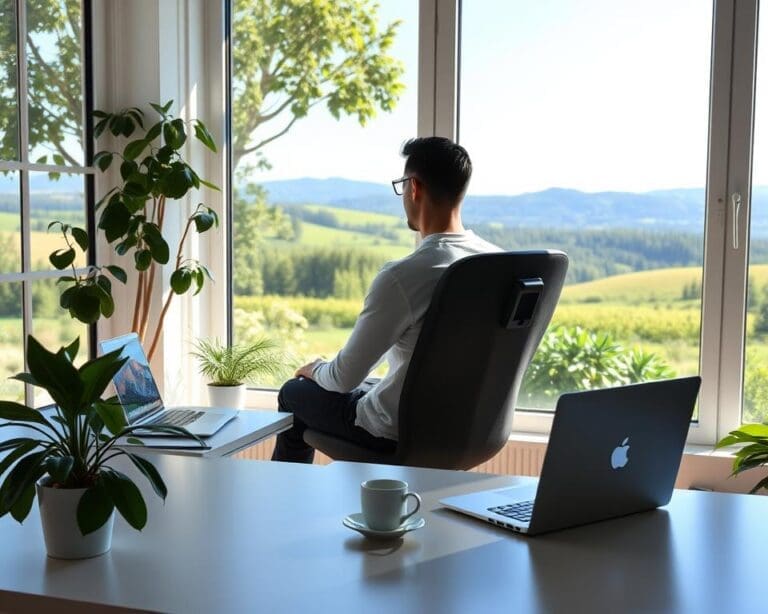The art of blending old with new has surged in popularity, particularly in the realm of interior design, where the question arises: How can you mix vintage with contemporary? This fusion creates unique aesthetic experiences, allowing individuals to express their personal style while honouring the rich heritage of design movements. Influences from the Arts and Crafts movement and Mid-Century Modern design enrich this contemporary blend, showcasing how vintage meets modern in inspiring and innovative ways.
As we explore this dynamic interplay, it’s essential to understand that decor is more than just visual appeal; it’s a reflection of personal expression. This introduction sets the stage for diving deeper into the key elements and benefits of harmonising these two distinctive styles, guiding you on a journey of discovering your own unique decor narrative.
Understanding the Aesthetics of Vintage & Contemporary Style
Exploring the aesthetics of vintage & contemporary style reveals a fascinating interplay between the old and the new. Vintage elements often carry nostalgia and character, marked by distinct patinas, intricate craftsmanship, and a sense of history. In contrast, contemporary styles emphasise minimalism, clean lines, and a focus on functionality. This fusion allows for a unique aesthetic appeal that speaks to both past traditions and modern sensibilities.
Iconic designers like Charles and Ray Eames have left an indelible mark on the furniture design landscape, demonstrating how vintage styles can be reimagined for modern use. Their work showcases timeless beauty that aligns perfectly with today’s design principles. Contemporary brands also contribute to this dialogue by implementing sustainable practices and innovative materials that bridge the gap between eras.
The beauty of merging vintage with contemporary lies in its ability to enhance spaces with a layered aesthetic appeal. This approach encourages the incorporation of classic elements into a sleek, modern framework, creating a balanced composition. By understanding these contrasting styles, one can achieve a harmonious atmosphere that celebrates the charm of bygone eras while embracing innovative design.

The Benefits of Blending Old with New
Embracing the benefits of blending old with new creates a space filled with character and charm. This fusion presents unique aesthetics, where vintage pieces harmoniously coexist with contemporary designs, reflecting an individual’s personal style. A home adorned with this thoughtful combination becomes a canvas for expression, showcasing stories from different eras.
Incorporating elements from various time periods enhances warmth in living spaces, making them more inviting and pleasant. The contrast between sleek modern lines and the intricate details of vintage items draws the eye, sparking interest and conversation among guests. Beyond mere aesthetics, this practice offers a sense of continuity through time, merging the old with the new in a celebratory manner.
Choosing to blend styles can also reflect eco-conscious values. By repurposing older items rather than purchasing new, mass-produced furniture, homeowners contribute to sustainability. Such choices resonate with those who appreciate the history behind each piece, knowing it adds depth to their decor.
Real-world examples abound, demonstrating the successful integration of vintage and modern. A mid-century modern chair paired with a minimalist table can serve as a beautiful focal point, while eclectic art from different periods adorns the walls, inviting intrigue. With careful curation, the fusion of old and new not only elevates design but encourages a narrative within each space.
How can you mix vintage with contemporary?
Blending vintage with contemporary styles offers a unique opportunity to create spaces that reflect individuality and timeless elegance. Understanding how to harmonise these styles enables homeowners to celebrate nostalgia while embracing modernity. Below are key elements of vintage decor that will form the foundation of your eclectic design.
Key Elements of Vintage Decor
To achieve that perfect mix, begin by identifying the key elements of vintage decor that resonate with you. Consider incorporating:
- Rich colour palettes, such as deep greens, reds, and creamy whites, often associated with vintage aesthetics.
- Textures like lace, velvet, and distressed wood that add depth to your space.
- Iconic vintage pieces like a well-worn leather armchair or a patterned rug, which can serve as striking focal points.
Modern Design Trends to Incorporate
Alongside these vintage elements, it is vital to embrace modern design trends that complement your chosen decor. To successfully merge styles, consider:
- Open-plan layouts that provide space and flow while allowing vintage pieces to shine.
- Neutral tones as a backdrop, enabling vibrant vintage decor to pop and create balance.
- Creative storage solutions that maintain a clean aesthetic while showcasing selected vintage treasures.
- Materials like reclaimed wood and metal accents which harmonise beautifully with vintage styles.
Incorporating these design principles demonstrates how can you mix vintage with contemporary effectively, creating a conversational space that is both stylish and inviting.
Creating a Harmonious Modern & Retro Combination
Crafting a harmonious modern & retro combination requires an understanding of design cohesion that unites elements from different eras. This blend can transform a space, allowing each piece to complement the other while celebrating individuality. Achieving visual balance is essential in this process, ensuring that both vintage and contemporary items enhance one another rather than compete for attention.
Start by selecting a cohesive colour scheme. Opt for shades that resonate across both styles to create a seamless flow. Soft neutrals can provide a backdrop that allows bold retro colours to stand out without overwhelming contemporary elements. Incorporating patterns, such as geometric prints or floral designs, can serve as a bridge, linking the past with the present.
Strategic placement of furniture and artwork is crucial. Use symmetry to foster a sense of order, but don’t shy away from contrast. A sleek, modern sofa paired with a vibrant, retro coffee table can create an eye-catching focal point. When it comes to decorative objects, choose pieces that embody both aesthetics—think of a contemporary vase filled with vintage blooms, showcasing style and history in one arrangement.
Real-world examples can serve as inspiration. Noteworthy interiors showcase how successful design cohesion breathes life into a space. The thoughtful interplay of modern and retro elements results in visual delight while maintaining personal expression. Embracing this harmonious blend invites creativity, allowing for a unique environment that reflects diverse tastes.
Key Pieces for a Fusion of Traditional and Modern
Creating a harmonious blend of traditional and modern design requires thoughtful selections. Identifying key pieces for a fusion of traditional and modern styles can lay the foundation for a truly unique living space. This encompasses furniture choices that showcase the artistry of vintage craftsmanship while embracing modern sensibilities. Textiles and accessories offer further opportunities to amplify this aesthetic, bringing together patterns and textures that enhance visual interest.
Furniture Choices
When considering furniture choices, look for items that emphasise both history and innovation. Pieces like a mid-century modern sofa can serve as a statement while honouring its retro roots. Pairing it with a classic antique coffee table adds warmth and charm. Items such as vintage armchairs upholstered in contemporary fabrics can create striking focal points in a room. Scout for pieces at estate sales, auctions, or online marketplaces to find the perfect combinations that highlight key pieces for a fusion of traditional and modern.
Textiles and Accessories
Textiles and accessories are essential in bridging the gap between styles. Incorporating vintage fabrics—such as damask or brocade—with modern geometric patterns can produce captivating contrasts. Consider using bold prints for cushions or throws alongside traditional rugs to achieve this effect. Accessories like art deco lamps or vintage-style mirrors can also tie the look together. Look for these elements in thrift shops, flea markets, or specialty shops to curate a blend that truly reflects your aesthetic vision.
Tips for Successfully Mixing Vintage Meets Modern in Your Space
Blending vintage and modern elements in your home decor can create a unique and inviting atmosphere. One of the most effective blending techniques is to define a focal point in your space. This could be a striking modern art piece or a vintage sofa that draws the eye, allowing the surrounding decor to complement rather than compete with it. By establishing a focal point, you anchor the design and set the tone for the entire room.
Layering textures is another essential tip for mixing vintage meets modern. Combining soft fabrics with sleek surfaces creates depth and interest in your decor. Consider pairing a contemporary metal coffee table with a plush vintage rug or draping a modern throw over an antique chair. This not only adds character but also invites guests to engage with the space.
When shopping for vintage finds, keep an eye out for pieces that echo colours or themes present in modern accessories. Adopting a unifying colour palette will help to harmonise diverse styles seamlessly. Moreover, reflect on your personal stories and experiences; they can greatly influence your design choices and create a meaningful environment. Incorporating these elements is vital in ensuring your space feels cohesive and personal.









